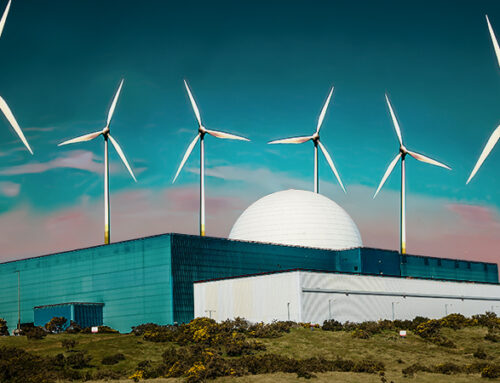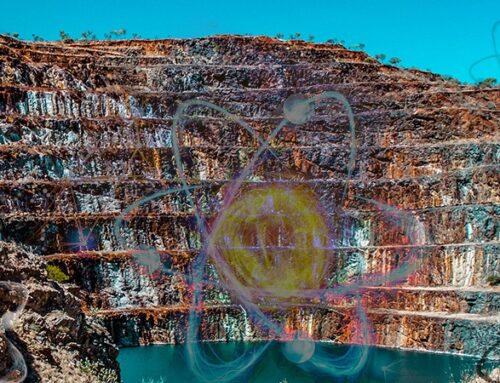Nuclear power has been in the news again. There have been mixed updates on EDF’s difficult European Pressurised Water (“EPR”) projects, but the UK Governments ambitious new climate targets might open the door to re-evaluating the subsidy support available to other projects.
Progress at Hinkley Point but more delays at Flamanville
First came the latest bad news from Flamanville where EDF continues to struggle to deliver its flagship EPR reactor. An inspection in March last year had detected flaws in the welding of the secondary cooling system in which the steam that drives the turbines is produced. In July, EDF confirmed that 33 welds had been found to have quality deficiencies and would need to be repaired, and that a further 20 welds would be redone, despite being free from defects. At the time, EDF revised it start-up schedule for the plant adding around 5 months with commissioning expected by the end of 2022, and increasing the projected cost of the plant from €10.5 billion to €10.9 billion. The reactor was originally expected to enter service in 2013.
However, at its annual safety review in January, French nuclear regulator, ASN, warned that start-up could be further delayed if a number of hard-to-reach weldings that were under investigation were judged to need replacing. ASN has now informed EDF that these welds do need to be replaced ahead of commissioning and rejected EDF’s request to delay replacement until 2024.
“Postponement of the repair operations until after reactor commissioning would pose a number of problems, notably with regard to demonstrating the safety of the reactor during the interim period. ASN therefore considers that repair of the welds concerned before commissioning of the reactor is the baseline solution,”
– Autorité de Sûreté Nucléaire
EDF is now analysing the impact of this decision on the plant’s schedule and cost and expects to give a detailed update in the coming weeks.
There was slightly better news from EDF this week in relation to its EPR project at Hinkley Point in the UK. The concrete base slab for the reactor – the UK’s largest ever concrete pour – has been completed, and the site is now ready for above-ground construction to begin. Hinkley Point C will be the first new nuclear power station to be built in the UK in over 20 years, and will have a capacity of 3.2 GW, providing about 7% of the country’s electricity. It is scheduled to start up at the end of 2025, with an identical plant planned for Sizewell C in Suffolk potentially opening in around 2031.
Despite the EPR challenges, nuclear could play a bigger role in the UK power market
On 27 June, the UK Parliament passed a law requiring the country to bring all greenhouse gas emissions to net zero by 2050, compared with the previous target of at least an 80% reduction from 1990 levels. This means that any emissions would need to be balanced by offsetting schemes such as planting trees or the use of technologies like carbon capture and storage (“CCS”).
As I have described previously, CCS technology is not currently economic and is likely to require significant subsidies to deliver the sort of offsetting that will be needed to meet this new net zero target. This is causing renewed interest in nuclear power as a potential solution to the challenge, being itself a carbon-free generating technology. The Confederation of British Industry (“CBI”) is urging the Government to progress large-scale nuclear projects and support the development of innovative nuclear technologies such as small modular reactors (“SMR”). (Unfortunately, the CBI also urged the Government to invest in CCS.)

Achieving the net zero target will require a fundamental change in how the UK economy functions which is likely to be extremely expensive – the Treasury has reportedly calculated that the change in emissions target could cost more than £1.0 trillion over 30 years based on BEIS’ projected costs of £70 billion per year, while the Committee on Climate Change suggested a lower figure of £50 billion per year.
At these levels, new large-scale nuclear projects might be sensible targets for subsidies, particularly Advanced Boiling Water Reactors such as the Wylfa Newydd project, which is a simpler technology than the EPR, with a longer track record of performance. If the Government is serious about its headline-grabbing climate targets, it should look carefully at where it deploys is subsidy resources. Brexit provides an opportunity to be technology-selective, which might be good news for a sector which is beyond the reach of private investment.






Re Bradwell and Sizewell C, you are confusing planning and construction -neither has got to FID
Thanks – part of my label had dropped off. I’ve fixed it.
From a wider perspective, investment in nuclear could be a poor choice because it has no spin off effect on the wider economy. You build a 2GW nuclear power station and that’s it. Where if you invest ‘grid money’ in hydrogen and hydrogen power production for the grid then all that learning could be also applied to a wider variety of fields such as hydrogen for heating and transport fuels. Even PV, Wind and Marine Power have more applications than nuclear because they are more scalable with size, applicable for large grid scale down to community/single building scale so money is better put in those fields. I’m not trying to say nuclear is a technically bad choice for a power station, it’s ticks all the boxes, but it just doesn’t seem to be a relevant technology to the wider change in the energy ecosystems…(if you seem what I mean).
I see where you’re coming from, but the wider benefits can only be realised if the technology works/makes sense. I’m far from convinced that hydrogen will be suitable for heating, for example, and might only emerge in niche transport applications. I think the Swansea Bay project demonstrated the challenges of delivering any kind of acceptable level of wider benefit for the costs of the scheme – at least with nuclear you get the benefit of a large slug of reliable baseload generation. If we wanted to build a wider exportable skills set, then perhaps we should deploy a slug of that pot towards SMR technology which is currently trapped in the chicken-and-egg situation of needing major investment to develop scalable manufacturing capabilities, but the amounts are difficult to secure without a proven market, which requires appropriately priced product and so on…
Nothing revitalises industry like cheap access to energy.
Tying people up in high cost renewable energy instead of industry enabled by low energy costs is something only a dedicated socialist would think sane.
I had a look at the issue and it transpires that
“.. their steam generators. These complicated and costly huge pieces of equipment are disappointingly short lived because of the corrosion of the internal tubes, which can cause leaks. The plant owners used to change them after some fifteen years. An extremely expensive and troublesome and also time consuming operation.
Understandable that welds need to be addressed in a non-critical area -as failure would bridge the gap between primary (radioactive) water and secondary water ”
It appears that old fashioned designs and manfacturing methods have been used for high integrity heat-exchangers is still having issues ;-{{
However it is not clear if as, like aerospace , these designs and methods are based on “certified” ones (ie. that have already worked) – rather than advanced designs and manufacturing. The Challenger space-shuttle could be viewed as an example of such thinking. There are alternative approaches to joining pipes and, too, solid-state welding which has been used for high integrity heat exchangers (such as the Rolls-Laval one) . {Solid state welding, aka diffusion bonding, does not melt the material and so avoids the stress assisted corrosion issues of fusion welding.}
It would be good to know if advanced technologies were being developed for nuclear – with their associated cost-reduction and higher integrity design; if they are it does not seem to be publicised – which is a shame as these are, most likely, the critical issues of cost and reliability – rather than the design of the reactor type itself (lead cooled, pebble bed, liquid fuel, salt cooled…) – and using traditional component design and (quite likely ill-suited) manufacture
That’s interesting and I also don’t know the answer. I think there are a couple of problems…one is that certain aspects of the build will be quite mundane and might not receive as much of a focus when it comes to development of new techniques, much as the design and specification of the Challenger O-rings probably didn’t enter the heads of any of the people working on that project.
The other issue I think is that in a post-Fukushima world there has been a raising of the regulatory specifications for reactors, possibly to an un-necessary degree, so the focus has been on trying to meet those technical challenges, and areas that are deemed to “work” are deglected. The steel carbonisation issue is a good example of this – clearly the falsification of materials reports was inexcusable, but I don’t really see why the pressure vessel lid at Flamaville should need replacing when the many in-service reactors that suffer from the same problem do not. These reactors would have failed to obtain a safety certificate had they been commissioned under the new rules, but there have been no problems with them during their operation, and the testing done in 2016/17 suggests they are safe to continue running.
The space programme is a great comparator as it also involves advanced engineering, extremely high costs, and a very small number of projects.
I think the comment on transferable technology has a point – but misses others.
In fact issues with hydrogen and hydrogen storage are difficulties that may not be easy to surmount and include hydrogen embrittlement – and why some are considering methane as a storage an vector technology.
However the construction management of large and difficult constructions seems to be something that is not well managed – and would, too, include off-shore power generation.
It should be noted that the technologies of (sensible) thermal energy storage and concentrated solar power share much with some of important nuclear reactor designs – being heat management and material science (such as advanced SiC composites) – which relates too to aerospace.
I am not convinced that build it (small) nuclear in a factory approach is necessary the way forward for wind/gas/steam turbine based technologies; partly because it is a retreat to low technology rather than advanced technology which offers benefits in terms of cost and robustness and sophisticated design. A better approach would be how could we design it to be manufactured to be reliable and easy to fabricate; historically this has been shown to be the best way – think it through – think it smarter – think it holistically (rather than incrmental).
I would like to comment that the engineers (in the Challenger case) were concerned about the “O”-ring (and might have mentioned it to Feynman…); but managers seemed to think because nothing had gone wrong before it was not broken (?)
I believe that much attention is often placed on the “sexier” technology rather than important technology – because it is apparently mundane (and, by implication, easier and not a problem).
As to construction. I like to think of Paxton, as an exemplar; he had the support of premier scientific family and their funding and was (by attention to all MUNDANE details – of design, manufacture, logistics, quality assurance and fabrication) was able to bring his innovative proposal in within the timescale and within budget which his competitors cold not, and despite the derision of the construction community (who, pejoratively , described it as “A Crystal Palace”).
As regard Fukushima; it should be pointed out that if it had been built to the recent standards (as to when the problem occurred) then it might well have not been a failure.
It has been suggested that some groups are pushing regulation as a way of making nuclear too expensive; I see this, if-so, as an opportunity for companies to be innovative and develop more advanced designs and manufacturing methods (eg laminate pressure vessels or advanced composites) – such as designing the pipe joints so that weld-failure is not catastrophic ( for example , catastrophic failure of welds in the “Liberty Ships” of World War 2, was averted by simple design changes – which meant they only had to worry about sinking due to torpedoes).
I suspect that making big companies (and the politicians they convince with their lobbying) go for cheaper solutions (and hence less profit) is going to be hard; perhaps it is a poor understanding of financial risk management ( a professional gambler does not make a living out of betting on the favourites – but the unappreciated with better outcomes).
{ASUS, for example, realised that they could make a lot of money on cheap small laptops using smaller screens – rather than more expensive large screened laptops – and so we have small tablets…}